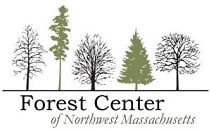- active managementA forest management strategy that attains desired forest goals and objectives, using planned silvicultural operations and forest management practices. Including harvesting trees, invasive species control, tree planting, mulching, scarification, and prescribed fire.
- adaptAdjustments, both planned and unplanned, in natural and human systems in response to climatic changes and subsequent effects. Planned ecosystem-based adaptation activities use a range of opportunities for sustainable management, conservation, and restoration.
- adaptationAdjustments, both planned and unplanned, in natural and human systems in response to climatic changes and subsequent effects. Planned ecosystem-based adaptation activities use a range of opportunities for sustainable management, conservation, and restoration.
- adaptative potentialThe capacity of systems, institutions, humans and other organisms to adjust to potential damage, to take advantage of opportunities, or to respond to consequences.
- adaptive capacityThe capacity of systems, institutions, humans and other organisms to adjust to potential damage, to take advantage of opportunities, or to respond to consequences.
- appropriationThe unacknowledged, harmful, or inappropriate adoption of the customs, practices, ideas, etc. of one people or society by members of another, and typically more dominant, people or society.
- carbon dioxideThe primary greenhouse gas emitted through human activities. Carbon dioxide is naturally present in the atmosphere as part of the Earth's carbon cycle (the natural circulation of carbon among the atmosphere, oceans, soil, plants, and animals). Human activities are altering the carbon(...)
- carbon sequestrationThe capture of carbon dioxide (CO2), such as through uptake by trees, for long-term storage which mitigates or defers the accumulation of CO2 in the atmosphere.
- carbon storageThe amount of carbon retained long-term within the forest, stored in “carbon pools/sinks.”
- climate changeClimate change is a long-term change in the average weather patterns that have come to define Earth’s local, regional, and global climates. These changes have a broad range of observed effects that are synonymous with the term.
- compliance marketA carbon market that is created because of any national, regional, and/ or international policy or regulatory requirement that has specific standards for participation. Compliance markets are often partnered with a requirement to reduce emissions, sometimes referred to as a carbon cap Learn(...)
- conservation restrictionA legally enforceable agreement that serves to ensure permanent protection of specific conservation values while permitting limited land uses consistent with the protection of said conservation values. Sometimes referred to as a conservation easement
- forest resilience"The capacity of a forest to respond to a disturbance by resisting damage or stress and recovering quickly” (Catanzaro and D’Amato 2016). Actions that build resilience help a forest respond better to changing climatic conditions, and help maintain its functionality, while continuing to provide(...)
- forest resiliency"The capacity of a forest to respond to a disturbance by resisting damage or stress and recovering quickly” (Catanzaro and D’Amato 2016). Actions that build resilience help a forest respond better to changing climatic conditions, and help maintain its functionality, while continuing to provide(...)
- greenhouse gasesGasses that trap heat in the atmosphere and lead to climate change when emitted in excess by humans. Water vapor (H2O), carbon dioxide (CO2), nitrous oxide (N2O), methane (CH4), and ozone (O3) are the primary greenhouse gases in Earth’s atmosphere.
- mitigateIn the context of climate change; human intervention to reduce the sources or enhance the sinks of greenhouse gases. Examples include expanding forests and other "sinks" to remove greater amounts of carbon dioxide from the atmosphere, replacing fossil fuel use, switching to solar energy or(...)
- mitigationIn the context of climate change; human intervention to reduce the sources or enhance the sinks of greenhouse gases. Examples include expanding forests and other "sinks" to remove greater amounts of carbon dioxide from the atmosphere, replacing fossil fuel use, switching to solar energy or(...)
- mitigative potentialThe ability to reduce greenhouse gas emissions or enhance natural sinks.
- natural climate solutionsways to protect, restore, and better manage our natural systems – forests, farms, grasslands, and wetlands – to reduce and/or remove carbon emissions. Examples include cover cropping of farms in the off season, to add more carbon to the soil, or planting trees to reforest streambanks. Natural(...)
- photosynthesisThe process by which green plants and some other organisms use sunlight to synthesize foods from carbon dioxide (CO2) and water.
- passive managementA planned forest management strategy that allows nature to take its course by forgoing most, if not all, human intervention in the growth, development, or trajectory of forest vegetation (aside from indirect human effects, such as altered deer populations and invasive species).
- rematriateDecolonize our current food, economic, and political systems and supporting Indigenous reconnection to natural systems; spiritually, mentally, and physically in a manner that prioritizes the return of Native women and youth to traditional territories and relationships with the earth. Find out(...)
- rematriationDecolonizing our current food, economic, and political systems and supporting Indigenous reconnection to natural systems; spiritually, mentally, and physically in a manner that prioritizes the return of Native women and youth to traditional territories and relationships with the earth. Find(...)
- stewardshipThe wise care and use of forest resources to ensure their health and productivity for years to come. Forest stewardship entails looking after woodlands responsibly and acting in a manner that recognizes both your rights and the rights of others, as well as the potential impact of activities on(...)
- stressorsA condition, change in condition, or other stimulus (such as diseases or drought) that impair or compromise the function or health/productivity of the system.
- sustainable forestryThe practice of meeting the forest resource needs and values of the present without compromising the similar capability of future generations —note sustainable forest management involves practicing a land stewardship ethic that integrates the reforestation, managing, growing, nurturing, and(...)
- voluntary marketThe issuance, buying, and selling of carbon credits on a voluntary basis. Learn more at northeastforestcarbon.org
- wildlands approachForests of any size and current condition, permanently protected from development, in which management is explicitly intended to allow natural processes to prevail with minimal human interference.
